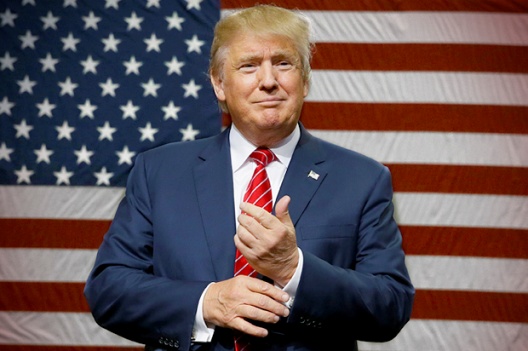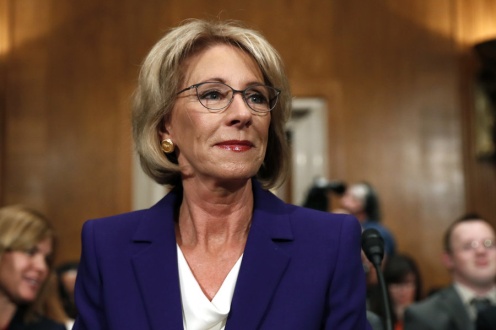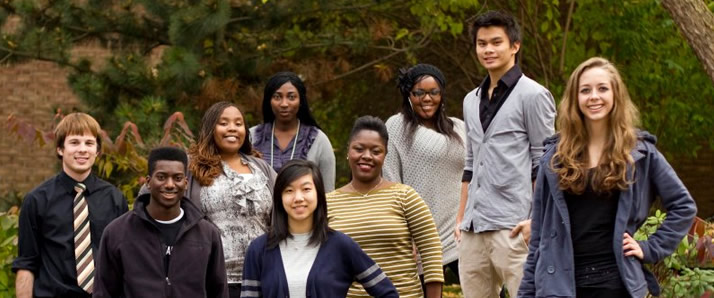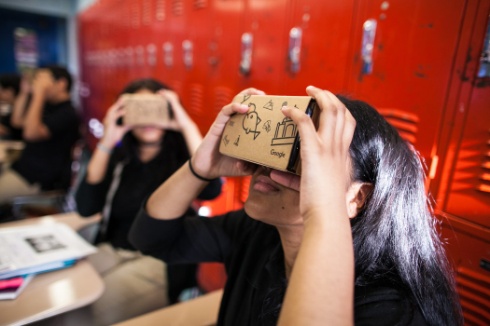An Ongoing Evolution in American Education
Teach Your Children Well
Few would contest that a good education is of paramount importance, not only for the individual receiving it, but for the betterment of society, nations, and the global community. Though perhaps not truly a requirement or an absolute necessity, an adequate education does prepare a person to meet and understand the challenges and complexities of life one encounters on a day-to-day basis.
As with health care, a sense if inherent American exceptionalism often leads many patriotic persons to assume and assert that the United States educational system is the best in the world. However, statistics would not bear this out. “According to the report, The Learning Curve, developed by the Economist Intelligence Unit, the United States ranks seventeenth out of forty countries ranked in overall educational performance. Finland ranks first.”1
Intense political rancor between the two dominant political parties has made the future direction of education in the United States uncertain. Democrats favor retaining the present-day, federally funded and directed educational structure, while Republican lawmakers have increasingly touted the perceived benefits and desirability of privatizing the American school system. Ongoing heated debate over the topic continues and much remains to be seen as to the affect a new President and Republican-dominant government will have on US education.
Government involvement in education began in earnest in 1867 when the Department of Education was created to generally collect information on teaching and schools in the interest of ascertaining what methodologies were most effective in educating the populace. This information was then made available to policymakers who would decide what direction to take going forward with education in the US.
After WWII, the federal government expanded their role in education dramatically. “In 1944, the “GI Bill” authorized postsecondary education assistance that would ultimately send nearly 8 million World War II veterans to college.”2
The Cold War inspired the creation of the National Defense Education Act (NDEA) in 1958, to facilitate education in sciences and technical fields so that the US might better compete with the emerging Soviet Union in those areas. The Civil Rights Act and subsequently inspired laws continued in the ‘60’s and ‘70’s with the intent of providing quality education for the poor and disadvantaged in struggling areas of the country.
In 1980, the Department of Education became a Cabinet echelon agency which continues to affect education nationwide. “The Department’s elementary and secondary programs annually serve nearly 18,200 school districts and over 50 million students attending roughly 98,000 public schools and 32,000 private schools. Department programs also provide grant, loan, and work-study assistance to more than 12 million postsecondary students.”3
Although the Fed plays a large role in education, states and local governments influence education dramatically. As do private and philanthropic organizations. By far, the lion’s share of school funding does not come from the Federal government.

The Implications of the Trump Presidency for Education
Many foresee great changes ahead for public education in the US under recently-elected President Trump. Philosophically aligned with many in the Republican party, the President is a firm believer in parental choice when it comes to a public vs. privatized education.
In September of 2016, then presidential candidate Trump stated “that his first budget would redirect $20 billion in federal funding to create a state-run block grant that he said he hoped would help poor children in low-performing public schools to enroll at charter and private schools.”4 President Trump’s stated intent was to provide school choice to disadvantaged students in the US.
At present, “The nation currently spends about $15 billion on Title I, the federal program meant for the education of poor children.”5 President Trump has not specifically tied his proposed $20B federal funding proposal to Title I, leading many analysts to believe that money might be aimed at voucher programs. Privatization enthusiasts hope that the Trump administration will scale back the Education Department’s involvement in US classrooms. Some feel President Trump may indeed eliminate or drastically minimize the Department of Education.

President Trump’s Controversial Choice for Secretary of Education – Betsy DeVos
Not without strong resistance from Democrats, President Trump’s appointee for Secretary of Education, Betsy DeVos, was confirmed on February 7th, 2017. With Republican Senators Lisa Murkowski and Susan Collins breaking rank, Vice President Mike Pence cast the tie-breaking vote for DeVos’ confirmation. Secretary DeVos “has no prior experience working in education, though she has spent decades advocating for school voucher programs and the privatization of schools.”6
DeVos and her husband have been strong proponents of school privatization for years. She is known to favor “educational choice” for parents, including private schools, digital classrooms, and home-schooling as viable options to traditional public education. In 2016, she expressed to the Detroit News a belief that public schools there should be jettisoned in favor of a free-market system.
The voucher programs favored by Secretary DeVos and President Trump are not without critics who fear the approach could lead to an aggravation of inequalities and harks back to a time of school segregation. “Proponents of vouchers and school choice, which include Trump, see them as a tool in privatizing education and turning it into a free-market system. (According to the New York Times, economists don’t see this as a good idea.”7
It remains to be seen the impact Secretary DeVos and President Trump will have on the future of public education in the US, but it’s hard to imagine the status quo will remain unaffected.

A Changing Demographic in US Schools
It’s no secret that the demographic makeup of the US is changing. “For the first time, the overall number of Latino, African-American, and Asian students in public K-12 classrooms surpassed the number of non-Hispanic whites.”8 Many see the diversity of the US as an advantage where these students to receive a good education. States like California have developed student equity plans to provide equal opportunities for students in disadvantaged areas.
Despite the inclination toward inclusion that many Americans feel regarding the country’s expanding demographic profile, certain economic realities cannot be ignored and are a source of contention for many who resent the huge cost of educating the children of illegal immigrants. According to the Federation for American Immigration Reform (FAIR), “A new report puts the price of educating the thousands of illegal immigrant children who recently crossed into the U.S. at a whopping $761 million this school year — as some school systems push for the feds to pick up the tab.”9
Beyond education, emotions are high and political disagreement is constant with regard to addressing the challenges faced when dealing with this changing demographic landscape. As with all areas of educational and political endeavor, Americans face a wait and see situation as to how the new administration will respond to these challenges and the decisions they will make along the way.
Emerging Trends in US Education
Systemic Reform and Market-Based Education
Expect to see a continuous push toward a voucher system for low-income students from a new administration which will advocate aggressively for school choice. The president’s new appointees display a decided affinity for school funding which is market-based. In addition to Secretary of Education, Betsy DeVos’ fondness for charter schools, Vice President Pence has also pushed a voucher program in his home state of Indiana. We can reasonably anticipate school reform measures to be more readily implemented in the immediate future, including voucher programs and an easing of charter school restrictions.
Multiple-Language Education
As the nation’s demographic makeup evolves, look to see multiple-language education continue. Recent research has shown that despite commonly held beliefs, a bilingual education doesn’t impede English language learning and can even enhance academic success in the long run. “Research on the broad cognitive benefits of bilingualism, as well as an increasingly globalized economy, has led many states to implement dual language programs that include native English speakers. Going forward, constraints may come not from federal regulations, but from a shortage of qualified teachers.”10
Declining Student Enrollment
An ongoing decline in student enrollment continues to impact campuses around the nation. With tuition costs ever-escalating, expect a new emphasis on personalization as a means of appealing to potential students and retaining them. “EdSurge News defines personalized learning as “technology-assisted differentiated instruction.” Personalization is a trend that will continue in 2017, especially as colleges and universities look for ways to accommodate increasing numbers of non-traditional students who require greater flexibility.”11
Targeted Microlearning
Related to personalization, microlearning supplies content to students in small bursts, or when there is a specific need. This type of education delivery is often done through various mobile platforms, apps, etc. It is specifically attractive to tech-oriented students whose attention is easily diverted. By example, one might study a particular lecture not in its entirety, but in easily digestable shorter segments which are simpler to digest and retain..
High-Velocity Education
High-velocity learning is “a form of learning that research suggests is faster, more effective and longer lasting than hours-long monologs in crowded lecture halls or classrooms.”12 Students learn by doing and by solving problems. Real-life simulations seen on mobile devices, apps, and laptops allow for real-time, rapid learning that mirrors the fast-changing world of today. Many feel the academic world will better serve students by incorporating high-velocity education methodologies.

Virtual Reality – No More Pencils, No More Books
Virtual reality as a learning tool is creating a great deal of excitement in academic circles. It’s potential is “virtually” unlimited. No longer limited to the printed page or a 2-dimensional video screen, today’s student can literally surround themselves with a virtual simulation of people, places and things they wish to learn about. At present, virtual reality is not widely used in the classroom due to the costs involved and a lack of access to the necessary equipment. Concepts such as Google Cardboard are driving down those costs and are making virtual reality easier to operate and more readily accessible. It’s implementation is sure to increase in the months and years ahead.
Teachers Unions Under Fire
In recent years, Republican lawmakers have had great success in upending collective bargaining rights for teachers in many areas of the country, including traditional labor bastions in the Midwest. “Opponents have proven particularly challenging for teachers unions, which have had to bend on issues like the elimination of tenure, the use of teacher evaluations based in part on student test scores and the expansion of charter schools – policies that they’ve historically opposed but that their Democratic allies President Barack Obama and former Education Secretary Arne Duncan … embraced.”13
In Summation
Expect an amplification of anxieties related to charter schools in the US in 2017. President Trump is a vocal advocate of private, publicly financed charter schools. Together with Secretary of Education, Betsy DeVos, they will continue to promote a proliferation of charter schools. “Many conservatives view public education as a government monopoly and are intent on putting traditional public schools out of business through competition — notably with privately run charters. This is their chance.”14 Opponents of educational privatization support public education in the traditional sense. It remains to be seen whether US charter schools will welcome the president’s plans for privatizing schools, or if they will ultimately reject them.
Political impact on education and all facets of American life are immediate and will reverberate into the foreseeable future. The crystal ball is clouded and accurate predictions are difficult to make in such a volatile and fast-changing political landscape. There is great promise on many academic fronts, both technologically and philosophically. Hopefully, hostilities and partialities can be set aside for the long-term betterment of American society’s educational needs.
SIS International Research has extensive experience all aspects of educational testing, analysis, and intelligence. Please utilize the link provided to view numerous examples of educationally-related research projects we have undertaken in the recent past: http://www.sismarketresearch.com/education-elearning/
[/fusion_text][fusion_separator style_type=”none” hide_on_mobile=”small-visibility,medium-visibility,large-visibility” class=”” id=”” sep_color=”” top_margin=”15px” bottom_margin=”15px” border_size=”” icon=”” icon_circle=”” icon_circle_color=”” width=”” alignment=”center” /][fusion_text]
The following resources were used in the development of this document:
-
https://rankingamerica.wordpress.com/2013/01/25/the-u-s-ranks-17th-in-educational-performance/
-
https://www2.ed.gov/about/overview/fed/role.html
-
https://www2.ed.gov/about/overview/fed/role.html
-
https://www.washingtonpost.com/news/post-politics/wp/2016/09/08/trump-pitches-20-billion-education-plan-at-ohio-charter-school-that-received-poor-marks-from-state/?utm_term=.385cbe113eed
-
https://www.washingtonpost.com/news/education/wp/2016/11/10/what-a-trump-presidency-means-for-americas-public-schools/?utm_term=.6f477309b28b
-
www.cosmopolitan.com/…/betsy-devos-trump-administration-education-…
-
www.cosmopolitan.com/…/betsy-devos-trump-administration-education-…
-
http://www.huffingtonpost.com/brad-c-phillips/top-10-education-trends-t_b_6345056.html
-
http://www.foxnews.com/politics/2014/09/02/cost-educating-new-class-illegal-immigrant-minors-estimated-at-over-760m.html
-
http://www.gettingsmart.com/2017/01/higher-education-learning-trends-in-2017/
-
http://www.gettingsmart.com/2017/01/higher-education-learning-trends-in-2017/
We provide comprehensive research services and strategic analysis of information. We have served many of the world’s largest and most influential education organizations. Our company conducts Market Research, Strategy Research and Competitive Intelligence.
With our Integrated Research and Intelligence, our clients gain advantage from comprehensive insight for decision-making. For over 40+ years, SIS International Research has conducted research projects in over 120 countries and continues to expand its coverage.





